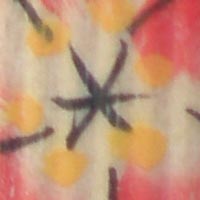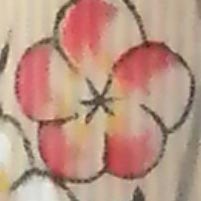Olympus FE-300 Review
Review Date: November 26th 2007
Author: Gavin Stoker
Leave a comment about this Review
|
Image Quality
All of the sample images in this Review were taken using the 12M mode, which gives an average image size of around 4Mb.
Noise
There are 6 ISO settings available on the Olympus FE-300 which you can select at any time if the camera is in the normal shooting mode. As expected, the Olympus FE-300 overreaches itself when attempting shots at ISO 6400 – the results similar to a watercolour painting on which the colours have run. Stick to ISO 800 at a push, but ideally ISO 400 if you don't want image detail to noticeably suffer the higher up the admittedly broad range you go. Here are some 100% crops which show the noise levels for each ISO setting:
ISO 50 (100% Crop) |
ISO 100 (100% Crop) |
 |
 |
ISO 200 (100% Crop) |
ISO 400 (100% Crop) |
 |
 |
ISO 800 (100% Crop) |
ISO 1600 (100% Crop) |
 |
 |
ISO 3200 (100% Crop) |
ISO 6400 (100% Crop) |
 |
 |
Sharpening
Here are two 100% crops which have been Saved as Web - Quality 50 in Photoshop. The right-hand image has had some sharpening applied in Photoshop. The out-of-the camera images are soft at the default sharpening setting. Alternatively you can change the in-camera sharpening level if you don't like the default look.
Original
(100% Crop)
|
Sharpened (100% Crop) |
 |
 |
 |
 |
Chromatic Aberrations
The Olympus FE-300 did suffer from chromatic aberrations during the review, but it was generally well controlled. Limited purple fringing was mainly present around the edges of objects in high-contrast situations, as shown in the examples below.
|
Example
1 (100% Crop)
|
Example
2 (100% Crop)
|
 |
 |
Macro
The Olympus FE-300 offers a Macro setting that allows you to focus on a subject that is 10cms away from the camera when the lens is set to wide-angle. The first image shows how close you can get to the subject (in this case a compact flash card). The second image is a 100% crop.
|
Macro Shot |
Macro Shot (100% Crop) |
 |
 |
Flash
The flash settings on the Olympus FE-300 are Auto, Red-eye reduction, Fill-in and Off. These shots of a white coloured wall were taken at a distance of 1.5m.
|
Flash Off - Wide Angle (35mm) |
Auto Flash - Wide Angle (35mm) |
 |
 |
|
Flash Off - Telephoto (105mm) |
Auto Flash - Telephoto (105mm) |
 |
 |
And here are some portrait shots. As you can see, both the Flash On and Red-eye reduction settings caused a small amount of red-eye.
|
Flash On |
Flash On (100% Crop) |
 |
 |
|
Flash On + Red-Eye |
Flash On + Red-Eye (100% Crop) |
 |
 |
Night Shot
The Olympus FE-300's maximum shutter speed is 4 seconds in the Night Scene mode, which is not great news if you're seriously interested in night photography. The shot below was taken using a shutter speed of 1/30th second, aperture of f/2.8 at ISO 800. I've included a 100% crop of the image to show what the quality is like.
|
Night Shot |
Night Shot (100% Crop) |
 |
 |
Overall Image Quality
That broad ISO range looks very enticing on paper, but how does it shape up in practice? As expected, the Olympus FE-300 overreaches itself when attempting shots at ISO 6400 – the results similar to a watercolour painting on which the colours have run. Stick to ISO 800 at a push, but ideally ISO 400 if you don't want image detail to noticeably suffer the higher up the admittedly broad range you go. Perhaps more of a disappointment is the visible softness towards the edges of nearly every frame, particularly pronounced when shooting at maximum wideangle. And despite its 12 megapixel claims, there's no more noticeable detail captured than say a 7 megapixel camera from one of Olympus' rivals, the FE-300's images generally benefiting from later sharpening. Laying the blame partly at the fact that the camera is so slender that there's not much to actually get a good firm grip on – camera shake and blurred images are also something of a problem if shooting in less than bright light. I took the camera out on a dull afternoon in Tokyo and only half the shots – at a push – were 'keepers'. Turning off the flash when shooting indoors for a more naturalistic look resulted in yet more soft shots worthy only of deletion. On the plus side there's a flattering softness and warmth to skin tones when utilising the Olympus FE-300's portrait mode, and, when using flash, red eye thankfully doesn't seem overly problematic. Left to its fully auto devices, compensatory white balance is unfortunately less than spot on, bathing daylight shots in a blue cast for example, while interiors are given that familiar orangey/yellow glow. If you've vast expanses of blue sky in your shots the results are vivid, but colours overall are less than realistic. In short you have to work harder than you should – given its snapshot status – to get an image from the Olympus FE-300 you'll be truly pleased with. Still, metering is adequate and exposures commendably even, with an acceptable to good handling of pixel fringing.
|
![]() PhotographyBLOG
is a member of the DIWA
organisation. Our test results for the Olympus FE-300 have been submitted to DIWA
for comparison with test results for different samples of
the same camera model supplied by other DIWA
member sites.
PhotographyBLOG
is a member of the DIWA
organisation. Our test results for the Olympus FE-300 have been submitted to DIWA
for comparison with test results for different samples of
the same camera model supplied by other DIWA
member sites.
